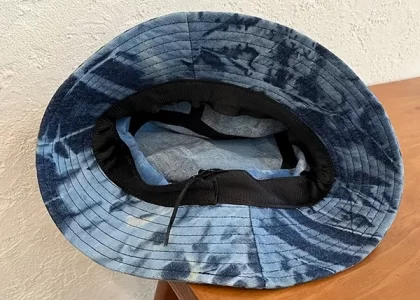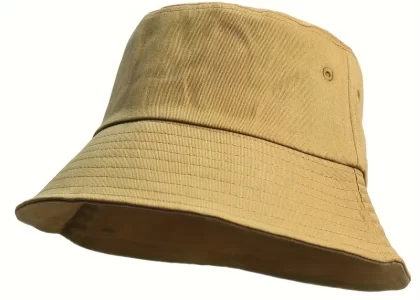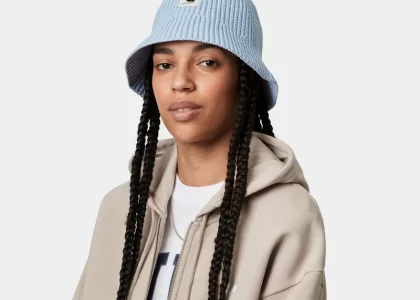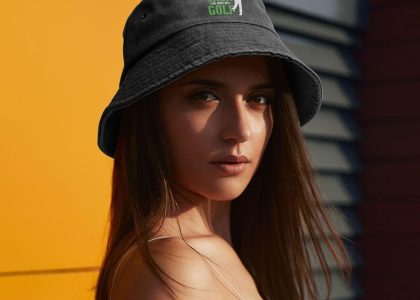Knitted hats are not only a practical accessory for keeping our heads warm during colder months, but they also offer an opportunity to showcase our personal style and creativity. In this guide, we will explore the art of knitting hats, from the basic techniques to more advanced designs, enabling you to master the art of creating fashionable headwear. By understanding the various techniques and exploring different designs, you can elevate your knitting skills and create unique and stylish hats that are both functional and fashionable.

I. The Basics of Knitting Hats
To truly master the art of knitting hats, it is essential to start with the basics. This section will introduce the fundamental techniques and materials needed to knit a hat successfully.
1. Knitting Needles and Yarn Selection:
When knitting hats, it is important to choose the right needles and yarn. The needle size will depend on the desired gauge and tension, while the yarn weight and fiber content will determine the warmth and texture of the hat. Experimenting with different needle sizes and yarns can help you achieve the desired results.
2. Casting On and Basic Stitches:
To start knitting a hat, you need to cast on stitches onto your needles. There are various casting on techniques to choose from, such as the long-tail cast on or the knitted cast on. Once the stitches are cast on, you can begin working the basic knit and purl stitches to create the fabric of the hat.

II. Advanced Techniques for Knitted Hats
Once you have a grasp of the basic techniques, it’s time to explore more advanced techniques to elevate your knitted hat designs. This section will introduce some of these techniques and their applications.
1. Cables:
Cables are a popular and visually striking technique used in knitted hat designs. By crossing stitches over each other, you can create intricate patterns and textures that add depth and interest to your hats. Experimenting with different cable patterns, such as twists, braids, or honeycombs, can result in unique and eye-catching designs.
2. Fair Isle and Colorwork:
Fair Isle and colorwork techniques involve using multiple colors of yarn to create intricate patterns and designs. This technique allows you to incorporate different colors and motifs into your knitted hats, resulting in vibrant and visually appealing headwear. Fair Isle and colorwork can be used to create geometric patterns, stripes, or even pictures on the surface of the hat.
III. Design Elements for Fashionable Knitted Hats
In addition to mastering the knitting techniques, incorporating design elements into your knitted hats can take them to the next level. This section will explore different design elements that can add style and sophistication to your hats.
1. Ribbing and Brims:
Adding ribbing or a brim to your knitted hat not only provides structure and shape but also adds a touch of elegance. Ribbing, created by alternating knit and purl stitches, can create a stretchy and snug fit around the forehead. A brim, created by folding or knitting a separate band, can provide added warmth and style to the hat.
2. Embellishments:
Embellishments, such as pom-poms, buttons, or bows, can be added to knitted hats to enhance their appearance and create a personalized touch. These small details can transform a simple hat into a fashionable accessory, allowing you to express your style and creativity.

IV. Customizing Knitted Hats to Fit
To create a truly fashionable and comfortable knitted hat, customization is key. This section will provide tips on customizing hats to ensure the perfect fit.
1. Sizing and Gauge:
To create a hat that fits properly, it is important to understand sizing and gauge. Measurements of the head circumference and the desired fit will determine the number of stitches and rows needed. Additionally, achieving the correct gauge with your chosen yarn and needles will ensure that the hat fits snugly and comfortably.

2. Hat Construction:
Different hat constructions, such as top-down, bottom-up, or in-the-round, offer varying ways to customize the fit of the hat. Some constructions allow for easy adjustments, such as adding or removing stitches, to achieve the desired size and shape.
-
Top-Down Construction: Top-down construction starts with casting on stitches at the crown of the hat and gradually working down to the brim. This method allows for easy adjustments throughout the knitting process, as you can try on the hat as you go and make modifications to ensure the desired fit. It provides flexibility in terms of adjusting the length, circumference, and shaping of the hat to suit individual preferences.
- Bottom-Up Construction: In contrast to top-down construction, bottom-up construction begins with knitting the brim or band of the hat and then working up to the crown. While this method doesn’t allow for real-time modifications like top-down construction, it still offers opportunities for customization. By carefully following the pattern and making adjustments to the number of stitches or the length of the hat, one can achieve a tailored fit.
- In-the-Round Construction: In-the-round construction involves knitting the hat in a continuous spiral, without the need for seams. This method creates a seamless and polished finished product. It allows for smooth, uninterrupted patterns and eliminates the need for sewing or joining sections together. In-the-round construction is often used in combination with either top-down or bottom-up techniques, providing flexibility and ease in customizing the fit.

Mastering the art of knitting hats not only provides warmth and comfort during colder months but also allows for endless creativity and style. By understanding the basics of knitting hats, exploring advanced techniques, and incorporating design elements, you can create fashionable headwear that reflects your personal style. Additionally, customizing hats to fit properly ensures both comfort and style. So, pick up your knitting needles, experiment with different techniques and designs, and embark on the journey of mastering the art of knitted hats. With practice and creativity, you can create unique and fashionable headwear that will keep you warm and stylish throughout the year.




